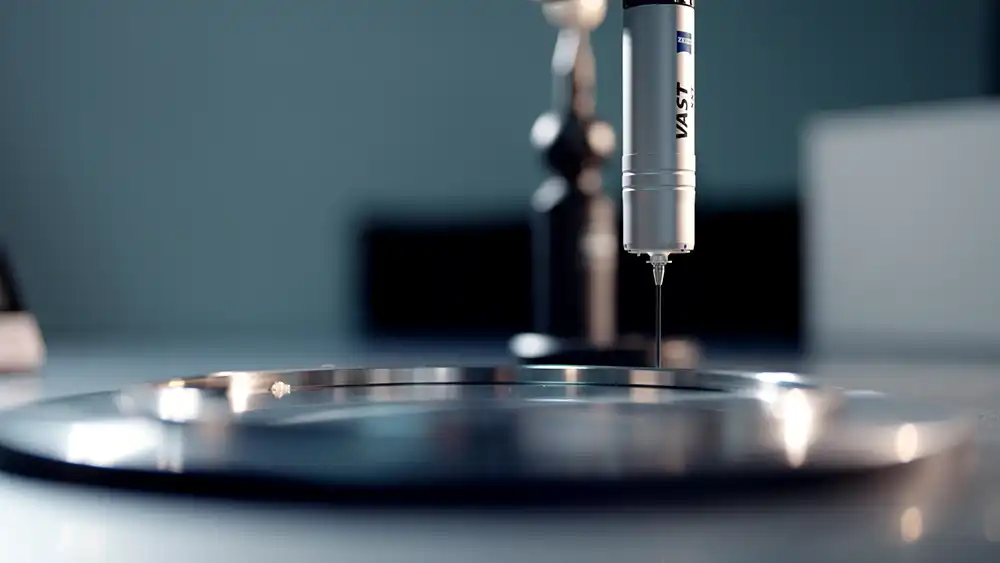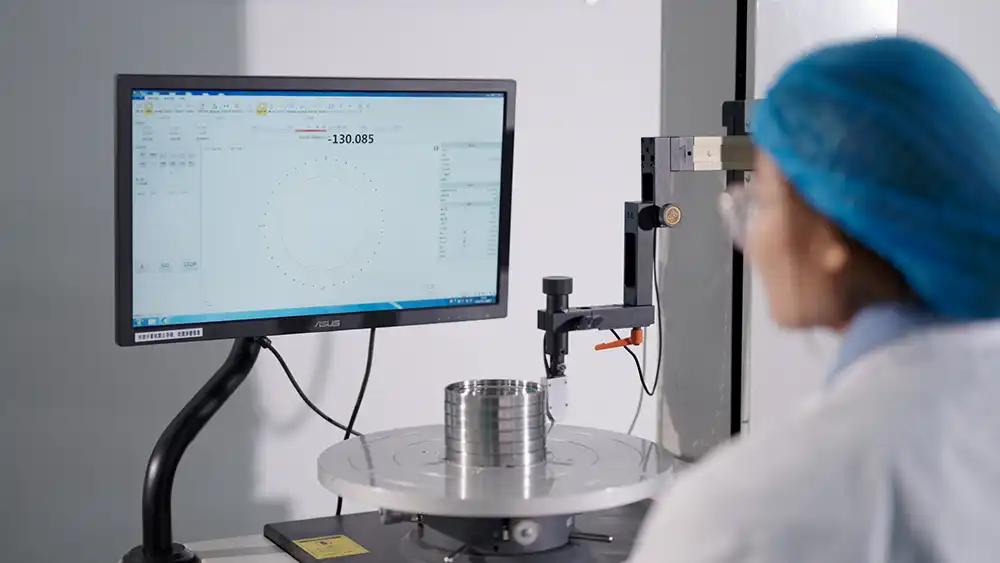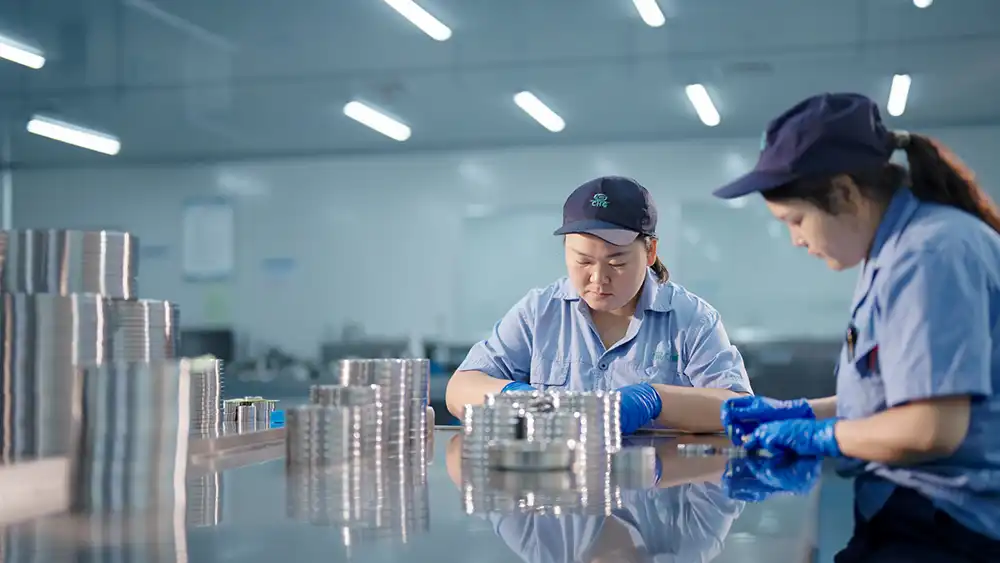How Do Thin Section Radial Contact Ball Bearings Improve the Performance of Machinery?
In the intricate world of mechanical engineering, thin section radial contact ball bearings emerge as a critical component that fundamentally transforms machinery performance. These specialized bearings represent a pinnacle of engineering innovation, offering unprecedented capabilities in supporting rotational motion with minimal space requirements and exceptional precision. Unlike traditional bearing designs, thin section radial contact ball bearings provide engineers and manufacturers with a sophisticated solution that addresses complex mechanical challenges across diverse industrial applications.

Can Thin Section Radial Contact Ball Bearings Revolutionize Industrial Efficiency?
Thin section radial contact ball bearings represent a quantum leap in mechanical design, offering unprecedented opportunities for revolutionizing industrial efficiency. Their unique structural characteristics enable manufacturers to optimize machinery performance while simultaneously reducing overall system complexity and weight. These bearings are engineered with exceptionally narrow cross-sections, which allows for significant space savings and enhanced design flexibility across multiple industrial sectors.
The revolutionary potential of these bearings lies in their ability to minimize friction and maximize load-bearing capacity within extremely compact configurations. Traditional bearing designs often require substantial physical space and introduce significant mechanical resistance, whereas thin section radial contact ball bearings challenge these conventional limitations. By utilizing advanced materials and precision manufacturing techniques, these bearings can support substantial radial and axial loads while maintaining remarkably low profile dimensions.
Manufacturing industries ranging from aerospace and robotics to medical equipment and semiconductor production increasingly recognize the transformative potential of thin section radial contact ball bearings. Their ability to operate with minimal friction, reduced weight, and exceptional precision makes them an ideal solution for applications demanding high-performance mechanical components. Engineers can now design more compact, efficient, and responsive mechanical systems that were previously impossible with conventional bearing technologies.
The efficiency gains achieved through these innovative bearings extend beyond mere dimensional advantages. Their sophisticated design enables smoother rotational movement, reduced heat generation, and enhanced durability compared to standard bearing configurations. By minimizing mechanical energy losses and optimizing load distribution, thin section radial contact ball bearings contribute directly to improved overall system efficiency and operational reliability.

Why Are Thin Section Ball Bearings Critical for High-Precision Mechanical Systems?
Precision represents the fundamental cornerstone of advanced mechanical engineering, and thin section ball bearings emerge as a quintessential solution for achieving exceptional accuracy in complex mechanical systems. Their remarkable design allows for incredibly precise rotational motion with minimal deviation, making them indispensable in applications requiring microscopic tolerances and consistent performance.
The critical nature of these bearings becomes evident when examining their unique structural characteristics. Manufactured with extremely tight dimensional tolerances, thin section ball bearings incorporate high-quality steel or ceramic balls positioned within ultranarrow raceway environments. This meticulous engineering ensures minimal internal clearances and maximizes contact precision between bearing components, resulting in unprecedented rotational accuracy.
High-precision industries such as semiconductor manufacturing, aerospace navigation systems, medical imaging equipment, and advanced robotics rely extensively on these specialized bearings. Their ability to maintain consistent performance under varying environmental conditions and load scenarios makes them invaluable. The bearings' design minimizes vibration, reduces potential misalignment, and provides exceptional resistance to external disturbances that could compromise mechanical precision.
Modern manufacturing techniques have further enhanced the capabilities of thin section ball bearings through advanced material selection and sophisticated heat treatment processes. Utilizing specialized steel alloys and ceramic composites, manufacturers can now produce bearings that demonstrate extraordinary resistance to thermal expansion, corrosion, and mechanical stress. These material innovations translate directly into improved long-term reliability and sustained high-precision performance.

How Do Unique Design Features of Radial Contact Ball Bearings Enhance Machine Performance?
The design features of radial contact ball bearings represent a sophisticated engineering approach to resolving complex mechanical challenges. Unlike conventional bearing designs, these specialized components incorporate multiple intricate elements that collectively contribute to superior machine performance across diverse operational environments.
One of the most significant design innovations involves the precise arrangement of ball bearings within extremely narrow raceway channels. This configuration enables more uniform load distribution compared to traditional bearing systems, effectively reducing localized stress concentrations. By minimizing potential failure points and optimizing load transmission, radial contact ball bearings can significantly extend the operational lifespan of mechanical systems.
The unique contact geometry of these bearings allows for enhanced load-bearing capabilities across multiple directional vectors. While standard bearings might struggle with combined radial and axial loads, thin section radial contact ball bearings can efficiently manage complex loading scenarios with remarkable stability. This versatility makes them particularly valuable in applications requiring dynamic motion and variable loading conditions.
Technological advancements in computational modeling and precision manufacturing have further refined the design capabilities of these bearings. Advanced simulation techniques enable engineers to optimize ball geometry, raceway profiles, and internal clearances with unprecedented accuracy. These computational approaches allow for the creation of bearings that can be precisely tailored to specific mechanical requirements, ensuring optimal performance in highly specialized applications.
Conclusion
Thin section radial contact ball bearings represent a remarkable testament to human engineering ingenuity, offering transformative solutions for modern mechanical systems. Their unique design, exceptional precision, and versatile performance characteristics continue to push the boundaries of what is possible in mechanical engineering.
Luoyang Huigong Bearing Technology Co., Ltd. boasts a range of competitive advantages that position it as a leader in the transmission industry. Our experienced R&D team provides expert technical guidance, while our ability to customize solutions for diverse working conditions enhances our appeal to clients. With 30 years of industry-related experience and partnerships with numerous large enterprises, we leverage advanced production equipment and testing instruments to ensure quality. Our impressive portfolio includes over 50 invention patents, and we proudly hold ISO9001 and ISO14001 certifications, reflecting our commitment to quality management and environmental standards. Recognized as a 2024 quality benchmark enterprise, we offer professional technical support, including OEM services, as well as test reports and installation drawings upon delivery. Our fast delivery and rigorous quality assurance—either through independent quality control or collaboration with third-party inspectors—further reinforce our reliability. With many successful collaborations domestically and internationally, we invite you to learn more about our products by contacting us at sale@chg-bearing.com or calling our hotline at +86-0379-65793878.
References
1. Harris, T.A. (2001). Rolling Bearing Analysis. John Wiley & Sons.
2. Stokes, A. (2018). Advanced Bearing Technologies for Precision Engineering. Springer Publications.
3. ISO 15 (2011). Rolling Bearings - Vocabulary. International Organization for Standardization.
4. Eschmann, P. (2017). Bearing Design in Machinery: Engineering Tribology and Lubrication. CRC Press.
5. SKF Group. (2020). Technical Handbook of Thin Section Bearings. SKF Publications.
6. Barden Precision Bearings. (2019). Design Guidelines for Thin Section Bearings. Technical Report.
7. Aerospace Industries Association. (2018). Precision Bearing Standards and Performance Metrics.
8. International Journal of Machine Tools and Manufacture. (2016). Research Advances in Bearing Technologies.
9. ABEC Precision Bearings. (2017). Computational Modeling of Bearing Performance.
10. Journal of Mechanical Design. (2019). Innovations in Radial Contact Ball Bearing Engineering.

